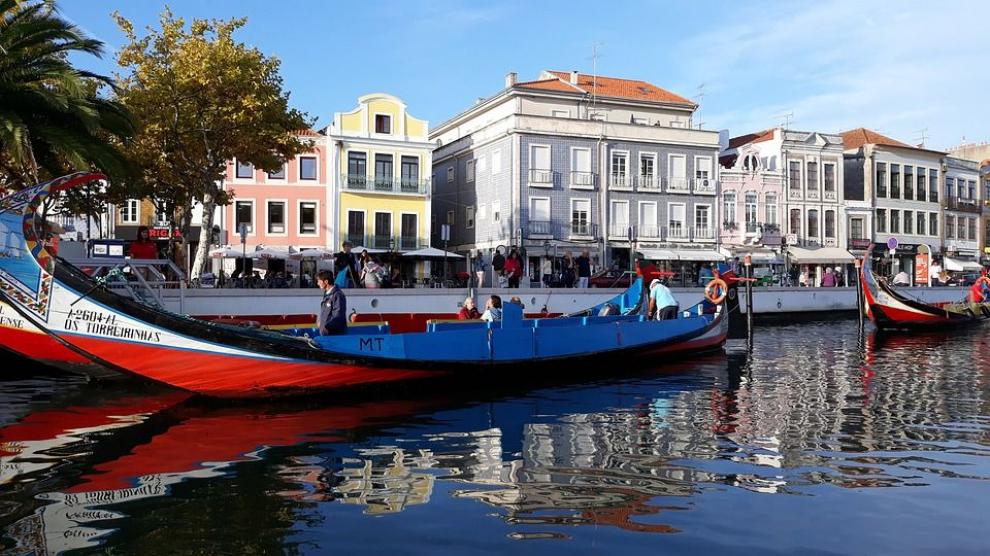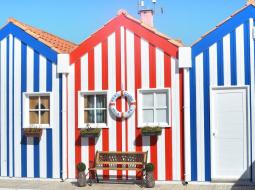Thessaloniki gets ready for its metro launch in November
The underground rapid transit lines have been under construction for almost two decades due to various project delays
 TheMayor.EU logo
TheMayor.EU logo 
Known as the "Venice of Portugal", Aveiro was elevated to the status of city in 1759 by King José I. But traces of human settlement in its area go back to pre-historic times as witnessed by great dolmens dotting most of the region.
For a long period, as early as Roman times, Aveiro was an important link in the production of salt and commercial shipping. It was conquered by the Moors and held until the 11th century, after which it became popular with Portuguese royalty.
In 1435 Aveiro was granted the privilege of holding an annual duty-free fair, later referred to as the Feira de Março (March Fair), which is an annual tradition and top tourist attraction to this day.
By the beginning of the 15th century, a great wall encircled the historical centre testifying to the importance of the city.
Between the 16th and 17th centuries, the river's instability at its estuary resulted in the closure of the canal, impeding the use of the port of Aveiro, and stagnating the waters of the lagoon. The ensuing social and economic crisis resulted in population decrease and emigration. Only with the construction of artificial canals, completed in 1808, could Aveiro expand economically again.
Now the water that circulates through the main canals of Aveiro is the mirror of the City. The Central Canal is the main axis and frontier of the municipality, dividing the city into two areas. On one side is Vera Cruz, and on the other – Gloria.
This city has a population of 77 thousand residents and a total area of 197,58 km2. The municipality of Aveiro is divided into 10 parishes.
Aveiro is an industrial city with an important seaport. It is known for its production of salt and for its seaweed harvest. Strongly marked by the tradition of ceramics, tiles and crafts of seamanship, palm trees, marine implements, macramés, traditional vessels and fishing vessels, Aveiro is also distinguished today by urban crafts projects, among which are reinventions of crochet.
Gastronomy, with an obvious highlight for Ovos-moles (local delicacy made of egg yolks and sugar), eels, Cavacas (cupcake style pastry) or the Liquor de Alguidar, among others, are the delights of those who visit Aveiro and are a strong economic engine of the municipality nowadays.
Another important indicator distinguishes Aveiro in a positive way - the unemployment rate in the municipality is lower than the average in Portugal. About 12% of the total industrial production is concentrated in the district.

Looking for adventure, fun, tranquility or tradition, Aveiro responds to all of these with excellence. From bike tours, bird watching, boat trips in and out of the city canals, to observing the front of the Ria and its relation with the city, the list is diverse. One of the ex-libris, due to the aquatic uniqueness of the city is of course the charm of the beach, great location for leisure and great place to spend your holidays at any time of year.
The beach of São Jacinto is undoubtedly one of the most beautiful beaches of the Portuguese coast. The Natural Reserve of S. Jacinto Dunes is also an unique beauty, a sanctuary of fauna and flora, where wildlife remains untouched and natural treasures like a community of flamingos can be seen. Last but not least, a must are also the Salinas of Aveiro; traveling through them makes you feel the pulse of the region.
Already inside the city, if you look for natural spaces, we leave you plenty of reasons to wander: Aveiro City Park (Jardim do Bairro de Santiago, Amores Park, Infante D. Pedro, Baixa de Santo António), Rossio Garden, Cais da Fonte Nova, City Park, Balsa Park, Ribeirao de Requeixo Park, Carregal Park, Ribeira de Esgueira Pier.
Address: Cais da Fonte Nova, 3811-904 Aveiro